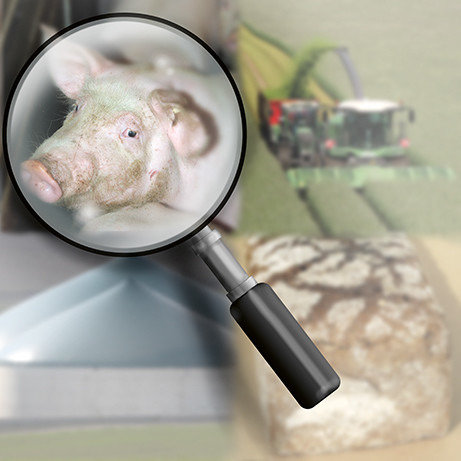New rye project gives you the whole picture!
Rye is underestimated, its economic potential is often not fully exploited – not only yield but also processing and marketing. As there is a wide range of processing possibilities, e.g. as grain, forage or wholecrop rye, a grower production strategy is needed. Selling, storing or feeding? SAATEN-UNION as one of the leading hybrid rye breeders wants to achieve with the project MyRye – growing with rye more transparency for all rye producers in order to simplify operational decisions.

Apart from crop management a clever and professional rye marketing/processing tool, offers the biggest scope for added benefit.
For centuries the focus has been on optimising plant protection and fertiliser management. Now, considering the decreasing number of plant protection product approvals and the fertiliser regulations the focus has shifted towards plant breeding progress. It is the most important factor influencing yield, efficiency and profitability in rye production.
For most farmers the counter arguments against rye are, the market price and the lower yield potential compared to other winter cereals. However, hybrid rye is the most efficient cereal and achieves the highest yield if water resources and nutrients are limited. Today and in future, especially outside high yielding areas, hybrid rye offers innovative approaches to increase both profitability and sustainability on farm.
Due to its undisputed positive nutritional value approx. 20 % of rye is used for bread-making. Currently on German grain markets the prices for rye of bread- making quality is at the same level as wheat of bread-making quality. But at which price(ratio) it is sensible to sell rye? Is storing worthwhile?
About 15 % of the rye harvest is used for bio energy. Thanks to its rapid early development rye plays an important role in biomass production and also to extend cropping in rotations with energy crops. Rye is also excellent as a cheap component for the bioethanol industry or as wholecrop for feeding. But what can be done if the timing of the wholecrop harvest becomes too late and does not work out? What has to be considered if rye straw is sold? Which options are available? When is the best point of sale?
Rye for animal feed takes the biggest share with approx. 60 % of the market segment. DLG (German Agriculture Society) recommends about 50 % rye in finisher pig diets and up to 40 % in concentrates for dairy feeding. A degree of reluctance persists towards a high rye ratio. However, this is without any reason, as shown by many trial results. In contrary, rye contributes to a better intestinal health and due to its higher content of fibers and fructans to an increased satiety and wellness in the pig.
Looking at a price difference of 20 to 30 €/t between rye and wheat a pig farmer does not need to consider for very long how he can save feeding costs! Therefore, according to economic factors rye is a healthy and sustainable feedstuff. Which feed rations including rye is reasonable from a feeding point of view but also from considering environmentally friendly pig farming?
MyRye – the future is rye is going to approach step by step every single aspect and show operational leeway in order to achieve the best results.
Schwerpunktländer für Roggen-GPS dagegen sind Schleswig-Holstein, Mecklenburg-Vorpommern und Sachsen-Anhalt mit geschätzten 35 Tha zur Ernte 2019. Im Vergleich zu den Vorjahren wäre das eine Steigerung um ca. 25 %. In der Wertprüfung für GPS-Roggen 2019 liegen die Trockenmasseerträge bei ca. 150 dt/ha und damit über dem langjährigen Durchschnitt (s. Abb. 2).
